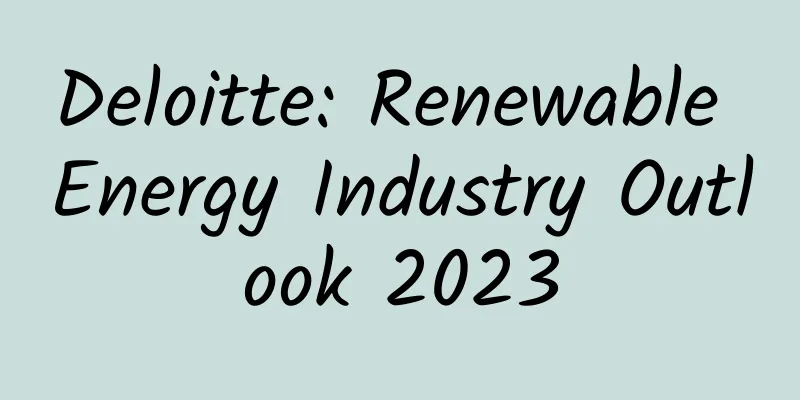Deloitte: Renewable Energy Industry Outlook 2023

|
U.S. renewable energy growth slows in 2022 as supply chain disruptions, trade policy uncertainty, inflation, rising interest rates, and interconnection delays lead to higher costs and project delays. Many of these challenges are likely to extend into 2023, creating strong headwinds. But growth could accelerate, driven by strong demand and the record-breaking amount of clean energy incentives in the Inflation Reduction Act (IRA). Growing demand in 2023 is likely to exacerbate supply chain constraints and interconnection bottlenecks, further pushing up prices and extending project timelines. Five renewable energy industry trends to watch Growing clean energy component manufacturing could ease supply chain hurdles over time U.S. manufacturing is currently unable to meet the renewable energy sector’s demand for clean energy components supported by a secure and sustainable domestic supply chain. New clean hydrogen economy could open the way for renewable energy suppliers Long-standing interest in green hydrogen was ignited with the enactment of the IRA in August 2022. The law provides a $3 per kilogram tax credit on qualifying “clean” hydrogen, which could make it price-competitive with higher-carbon “grey” hydrogen in much of the country. IRAs help incentivize renewable energy providers to pursue opportunities in low-income communities So far, the clean energy transition has focused largely on wealthier Americans, who benefit from incentives like rooftop solar or tax credits for electric vehicles, while many low-income communities have been left behind. Renewable energy industry focuses on managing growing cyber risks One sign of the renewable energy industry’s maturing is that it is increasingly being targeted by cyberattacks. Offshore wind industry tackles challenges to achieve rapid growth The U.S. offshore wind project development pipeline has grown to more than 40 gigawatts (GW) of potential capacity by mid-2022 across 12 states. Currently, only 42 megawatts (MW) of capacity is in operation, with about 1 GW under construction and nearly 19 GW in the permitting stage. Another 20 GW is in the site selection and planning stages and may take years to develop. The next few years may therefore be critical in addressing challenges to unlock growth. |
<<: 1/3 of PC gamers choose 1080p. What about you?
Recommend
5 core steps to acquire app users
Many startups are interested in trying to discove...
Ah? Music can actually heal injuries!
In order to ensure the popularization effect of l...
A guide to avoiding pitfalls when promoting KOLs
Inspired by the recent criticism of traffic fraud...
Which Wenchang Pagoda is the most effective? The truth is finally revealed!
Wenchang Tower is the most common Feng Shui masco...
Yellow high temperature warning! Six tips for avoiding the heat →
Audit expert: Peng Guoqiu Deputy Chief Physician,...
Huawei once again took the first place in the 5G mobile phone market share list, and its accumulated advantages are obvious
The world is accelerating the construction of 5G ...
How much is one hundred ounces of gold worth in ancient times? Much less than I thought
In costume TV dramas, the emperor would often rew...
How to prevent user churn starting from the user life cycle?
I've been thinking about some things about us...
iPod is on the decline. Can smart speakers take over?
iPod is the most revolutionary music player in th...
One sheep, two sheep, three sheep...I have insomnia. Does counting sheep really help? The truth is →
“When you can’t sleep, count sheep and you’ll fal...
30 information flow cases to teach you how to improve conversion
January's creative sharing is finally here! A...
Ivy League Daddy "Fun Chess Thinking Course L2 Chess Advanced Course"
Ivy League Daddy's "Fun Chess Thinking C...
For a sprained joint, should you apply heat or cold?
In daily life, various joint sprains are common, ...
Sony MDR-1000X pushes BOSE off the altar to create the most powerful Bluetooth noise reduction
When it comes to noise-canceling headphones, many...



![[Case sharing] How did she gain 1 million followers in just two months?](/upload/images/67cc40ec23723.webp)





